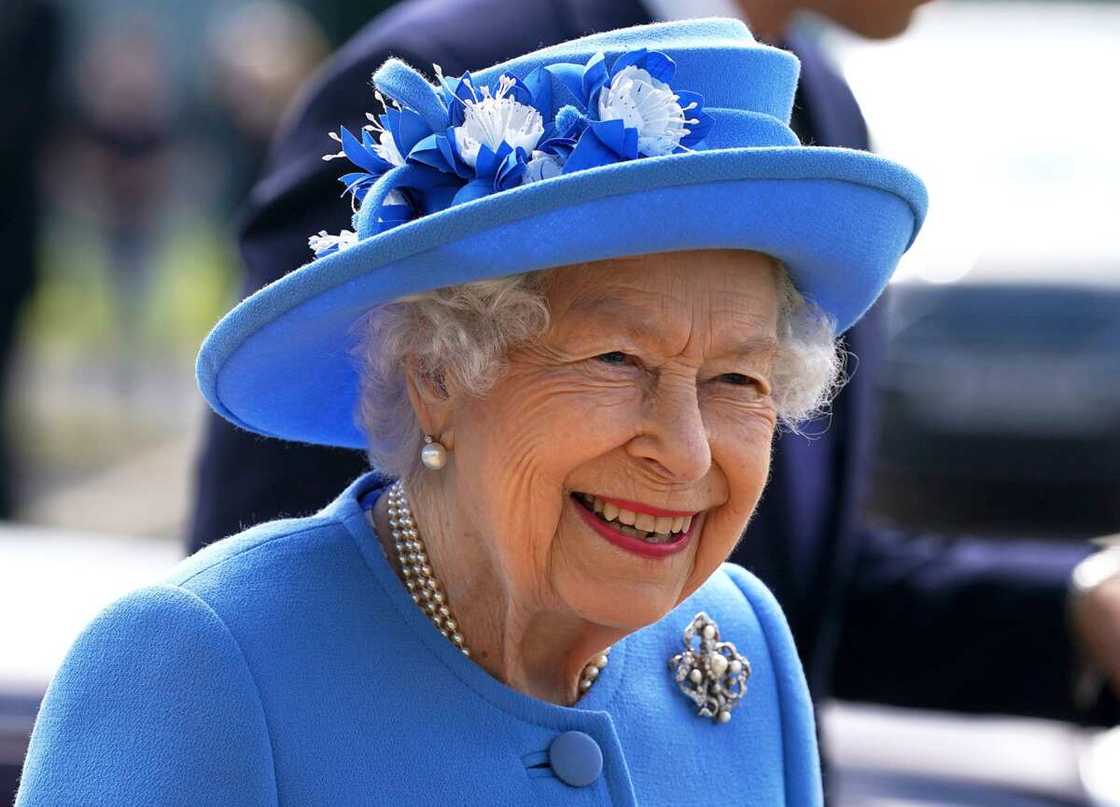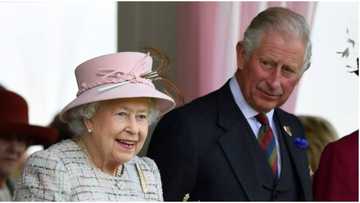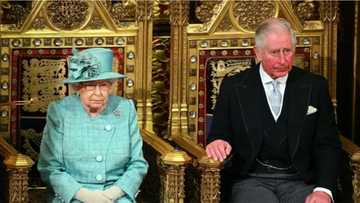Queen Elizabeth II, Longest Reigning Monarch, Declared Dead
- The world has been thrown into mourning as Britain's longest-reigning monarch, Queen Elizabeth, is declared dead at 96
- Her death brings to a close a reign that spanned seven decades and made her the most recognized woman in the world
- As monarch, the Queen is automatically granted a publicly funded state funeral and details for the ceremony are expected to be released soon
PAY ATTENTION: Click “See First” under the “Following” tab to see Legit.ng News on your Facebook News Feed!
London - Queen Elizabeth II, the longest reigning monarch in British and Commonwealth history, died on Thursday, September 8.

Source: Twitter
Buckingham Palace said in a statement:
“The Queen died peacefully at Balmoral this afternoon. The King and The Queen Consort will remain at Balmoral this evening and will return to London tomorrow.”
The news comes just hours after Buckingham Palace released a statement noting concern for the royal’s health.
PAY ATTENTION: Follow us on Instagram - get the most important news directly in your favourite app!
Elizabeth is succeeded to the throne by her and Philip's first-born son, Prince Charles.
Elizabeth became Queen in 1952, at the relatively tender age of 25, and presided over the country and the Commonwealth, including Canada, for seven decades.
Those 70 years as monarch were recognized during this year's Platinum Jubilee events, which reached their height in London in early June.
The Guardian UK reports that Prince Charles, 73, heir to the throne since the age of three, is now king, and will be officially proclaimed so at St James’s Palace in London as soon as practicably possible.
The BBC reports that Queen Elizabeth II's tenure as head of state spanned post-war austerity, the transition from empire to Commonwealth, the end of the Cold War and the UK's entry into - and withdrawal from - the European Union.

Read also
Death of Queen Elizabeth II: World leaders pay tributes, Britain mourns as Charles becomes King
Her reign spanned 15 prime ministers starting with Winston Churchill, born in 1874, and including Liz Truss, born 101 years later in 1975, and appointed by the Queen earlier this week.
She held weekly audiences with her prime minister throughout her reign.
At Buckingham Palace in London, crowds awaiting updates on the Queen's condition began crying as they heard of her death. The Union flag on top of the palace was lowered to half-mast.
The Queen was born Elizabeth Alexandra Mary Windsor, in Mayfair, London, on 21 April 1926.
From Victoria to Elizabeth II: Why Queen of England has a throne in Nigeria
The British monarchy has a place in the history of Nigeria.
For Queen Elizabeth II, she visited Nigeria twice. Her first visit to Nigeria was in 1956 before the most populous African nation became independent.
The second was in 2003 under the Obasanjo administration tо аttеnd thе Commonwealth Hеаdѕ of Government Mееtіng held during that period.
From Elizabeth to Prince Charles: The transition of power
Flags will be lowered to half-mast and Prince Charles will unofficially become king immediately upon Elizabeth’s death.
He is expected to make his first speech as head of state on the evening of his mother’s passing.
The day after her death, that is Friday, September 9, flags will be raised again and at 11:00 a.m. local time, Charles will officially become king and Camilla will become the UK’s queen.
Source: Legit.ng



